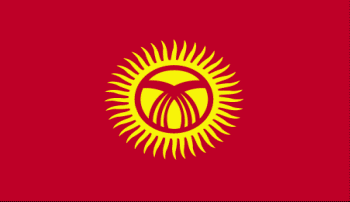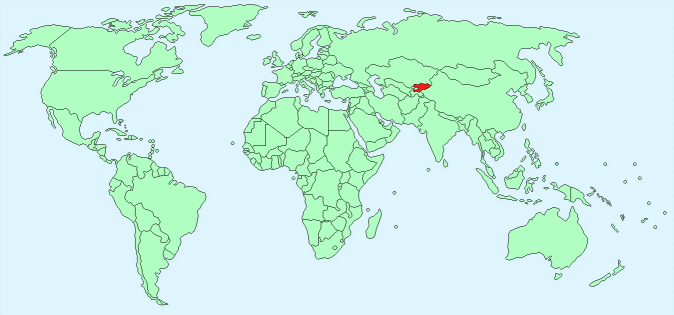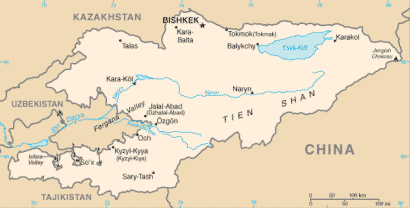Kyrgyzstan


Continent – Asia
Region – Central Asia
Size – 199,951 km²
Geography – mountainous with valleys
Language – Kyrgyz (official), Russian (official), Uzbek, Dungun
Religion – Muslim 75%, Russian Orthodox 20%, other 5%
Monetary Unit – Kyrgyzstani som
Natural Resources – gold, rare earth metals, coal, oil, natural gas, nepheline, mercury, bismuth, lead, zinc, hydropower
Agriculture – tobacco, cotton, potatoes, vegetables, grapes, fruits and berries; sheep, goats, cattle, wool
Industry – small machinery, textiles, food processing, cement, shoes, sawn logs, refrigerators, furniture, electric motors, gold, rare earth metals

Neighbouring Countries – China, Tajikstan, Uzbekistan, Kazakhstan
Population – 5,604,212 (2014 estimate)
Population Growth Rate – 1.04%
Average Life Expectancy – 70.06
Capital City – Bishkek (839,000)
Highest Mountain – Jengish Chokusu (7,439m)
Longest River – Naryn (807 km)
Climate – continental – cold winters -20°C to -6°C and warm summers 12°C to 24°C
Yearly Rainfall – 120 cm (approx) mostly in the mountains
Plant Life – steppes, meadow-steppes, meadows, bushes and forests, alpine plants, tulips, edelweiss, juniper
Animal Life – snow leopard, brown bear, lynx, wild rams, marmots, hares, and mountain goats
Bird Life – mountain goose, rock pigeon, partridge, Alpine jackdaw, big desert bullfinch
Harvard Reference for this page:
Heather Y Wheeler. (2015). Kyrgyzstan. Available: https://www.naturalhistoryonthenet.com/Facts_Figures/Country_Facts/kyrgyzstan.htm. Last accessed Monday, July 18, 2016
Facts and Figures Pages
